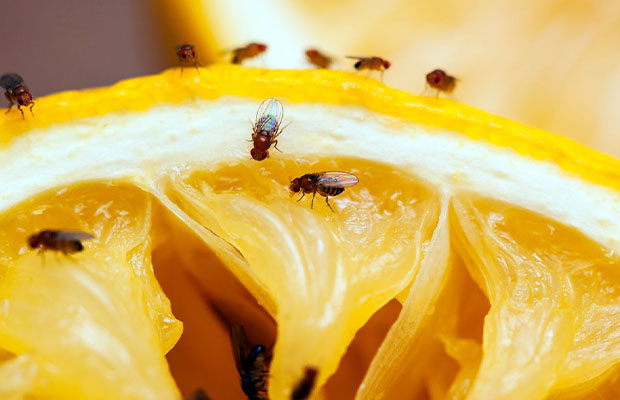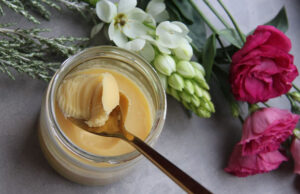Gnats are a group of tiny flying insects that include drain flies, fruit flies, and fungus gnats. Fruit flies are brown and spherical, drain flies have wings that resemble moths, and fungus gnats are dark with long legs. Fruit flies are drawn to water. How to get rid of gnats in the kitchen?
To reduce the sources for the development and reproduction of kitchen gnats, it is preferable to remove overripe fruit, empty trash cans, and run garbage disposals frequently.
In this article, we discuss the origins of gnats, outline five practical methods for getting rid of them, and offer advice for avoiding future infestations. Let’s get started!
Table of Contents
What Are Gnats?
Gnats also referred to as fungus gnats, are tiny, flying insects that feed on rotting organic material, such as decayed plant material and rotting fruit. Fungus gnats have black bodies with black eyes, in contrast to fruit flies, which are typically brown with red eyes. Finding individual flies is difficult because these pests only reach a maximum length of 1/8 of an inch.
There’s a good chance you have an infestation if you see fungus gnats buzzing around your kitchen. Fortunately, there are numerous ways to get rid of gnats from your kitchen, and most of them only require common household items like dish soap and apple cider vinegar.
How Do Gnat Infestations Begin?
Gnats commonly enter homes through holes or cracks in the foundation, walls, windows, or doors. Inhabited by gnats, rotten fruit, trash cans, and other moist areas with organic matter in decay are common. Near toilets, drains, and sinks can also be discovered.
What Makes Gnats Be Attracted To A Kitchen?
Fungus gnats are attracted to damp, fungus-rich areas inside buildings. While these pests will also congregate outside near moist areas that encourage fungus growth, homes offer a warm environment for growth, mating, and egg-laying.
Fruit flies have a keen sense of smell, so it’s common to find them breeding and feeding in the kitchen sink drain. There are plenty of food scraps available in garbage disposals to entice them.
Fungus gnats may also be attracted by overwatered houseplants on kitchen windowsills and fungus growth brought on by leaky pipes under sinks.
Tips To Get Rid Of Gnats In The Kitchen
Vinegar Trap
What You’ll Need
- Apple cider vinegar
- Dish soap
- Mason jar, Bowl, or Disposable cup
- Paper cone
A tall mason jar, bowl, or cup should be filled with apple cider vinegar before adding a few drops of dish soap. Make a cone out of paper that is both wide enough for the gnats to fit through and narrow enough to prevent them from easily escaping. Be careful not to let the cone’s tip touch the vinegar trap as you insert it into the mason jar. To get rid of gnats, set up the trap close to the infestation.
As the vinegar solution fills up with gnats, you might need to change it periodically. The gnats are drawn to the trap like fruit flies by the smell of apple cider vinegar, which is similar to that of rotting fruit. The gnats have trouble flying out as they enter, and they eventually drown in the vinegar that has been mixed with soap.
Clean Your Sink Drains
What You’ll Need
- Baking soda
- White vinegar
- Boiling water
- Ice cubes and Rock salt – for garbage disposals
In your kitchen’s drains or garbage disposal, rotting organic matter may attract fungus gnats. The organic slime that builds up in drain pipes is a food source for fungus gnat larvae, drain fly larvae, and fruit fly larvae. Cleaning your sink drains will help get rid of gnats and other pests by eliminating their food source.
Pour a cup’s worth of baking soda powder down the drain to get the process started. Add one or two cups of vinegar right away, then wait for the reaction to bubble. Removing the pests’ food source, this reaction will lift the grime from the drain pipe walls. Fill the sink to the brim with boiling water, then let it cool before turning on the water to rinse any leftovers.
When using a garbage disposal, pour rock salt and ice cubes down the drain before starting it. Although it is optional, you can choose to add vinegar and baking soda to the garbage disposal to deodorize it. As the garbage disposal crushes the ice cubes, continuously pour boiling water over the sink. The blades of the disposal should be cleaned as a result.

Natural Neem Oil Spray
What You’ll Need
- Cold-pressed neem oil
- Castile soap or Dish soap
- Spray bottle
Since neem oil is water soluble, it is preferable to mix your own spray bottle of the solution even though there are many pre-mixed neem oil sprays on the market. Gnats could be kept away from your kitchen sink and your plants by making your own mixture with some castile soap.
500 mL of plain water, 1 teaspoon of liquid castile soap or liquid dish soap, and 1 teaspoon of pure neem oil should be combined in a spray bottle. Spray around your plants and anywhere the gnats congregate after giving the bottle a good shake before using. Neem oil can burn plant leaves in direct sunlight, so only spray your plants in the late afternoon or on cloudy days.
Check for signs of a gnat infestation if you have any houseplants nearby or a planter on your windowsill because fungus gnats frequently hide among plants and feed on the roots of indoor plants, particularly herbs and rotting fruits. To get rid of these gnats while maintaining the organic health of your plant, use a natural neem oil spray.
Use A Wine Trap
We’re not asking you to kill gnats by sacrificing your wine collection, though! Instead, you should use an old bottle of wine that has almost turned to vinegar for this clever trap. It can be applied similarly to how the aforementioned apple cider vinegar trick was applied: A small container should be filled with some of the old wine and a few drops of dish soap. The mixture should then be placed in gnat-infested areas of your house while you wait for the bugs to enter.
Sticky Fly Paper
Regarding the surfaces they fly into or land on, gnats don’t have any preferences. You can catch the bugs as they fly through your kitchen by hanging sticky paper traps. In your kitchen, especially where the flies are most crowded, place the sticky fly paper in strategic locations. Fruit pieces that are too ripe can be used as bait, but it’s not required.
You might need to switch out the roll after a few days because gnats will accumulate on the sticky fly paper. Be cautious not to catch any other unintended or helpful insects, such as bees, butterflies, or even larger animals like lizards or small birds. Consider the wildlife when setting these traps out because this happens more frequently outside.
Use A Bug Zapper
Like many insects, gnats are drawn to lights because the bright light throws off their sense of direction. A bug zapper kills gnats by drawing them into its light and then shocking them with electric shocks that are just strong enough to kill them instantly. In addition to gnats, fruit flies, drain flies, house flies, and mosquitoes can all be effectively controlled by a bug zapper.
Close the lights, and place bug zappers all around the kitchen. Clean up the frizzed husks the following day after the bugs have been eliminated by the bug zapper. To get rid of gnat infestations, you might need to leave the bug zapper out for a few days, particularly if you haven’t located the source of the issue.
The Bottom Line
Maintaining cleanliness will keep insects and pests out of your kitchen. Luce Home can help you with home maintenance and upkeep when the cleaning tasks become too much.
I hope this information is helpful to you, and our cleaning staff will make sure your kitchen is spotless when they’re done! Have a try!
Read More Kitchen Guide:


